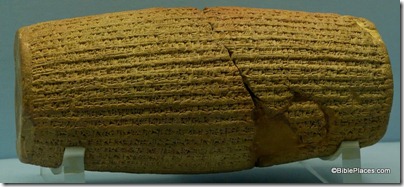I am intrigued by a new report of an excavation of a Jerusalem burial cave for several reasons (HT: Roi Brit). First, the tomb is interesting in its own right, with six kokhim, a standing pit, a blocking stone, and seven complete ossuaries. The lid of one of these bone boxes was attached by a bronze nail and another had a two-line inscription which read in part, “Cursed is the one who casts me from my place.” The archaeologists date the cave to the 1st century AD.
But I’m less impressed by the obvious haste with which the tomb was excavated. The archaeologists make no attempt to mask the conditions under which they worked. They write:
On the night of January 18, 2009, a rock-hewn burial cave was hastily documented in the Qiryat Shemuel neighborhood of Jerusalem.
Night conditions are less than ideal for archaeology, even when the excavation is in a cave.
The hurried process and poor lighting conditions in the cave precluded a proper examination and description of the cave’s contents.
The operation was so hasty that they could not even get sufficient lighting in place for their examination.
Artifacts were not removed from the cave and once its documentation was done, it was sealed and covered with soil.
Sealing a cave after excavation is not unusual, particularly when it is not necessarily unique and lies in the way of a building project. But it is disturbing that artifacts were left in the cave when a proper examination was not done. The world has not yet been rid of grave robbers.
Due to the haste, only two complete ossuaries and several decorated fragments were documented (Figs. 4, 5)….Careless engravings or traces of faded paint were noted on other ossuaries; these may also be inscriptions that require further research for decipherment.
The obvious question here is who is running the show in Jerusalem. Do building contractors have more authority than government archaeologists? It seems to me that this report is a quiet protest against the way antiquities are being treated in Israel. The tomb and its artifacts are part of the nation’s heritage. Whatever construction project is involved is likely not part of that heritage. What is so important that the contractors cannot wait one day while the tomb is properly studied? Who makes the decision on these matters? Are they influenced by the deep pockets of the building contractors? Are Israeli government officials selling out the nation’s heritage to line their pockets?
